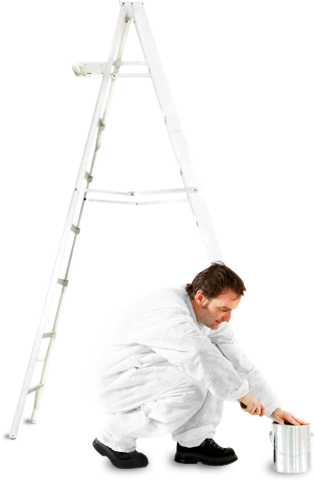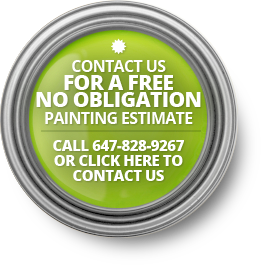FAQ
Q: What’s included in a quote?
A: Our quotes cover everything discussed during the estimate. We give you a detailed list of all areas to be painted including the type of preparation involved. All of our quotes include labour and paint, unless otherwise stated.
Q: What can I expect from an interior paint job?
A: Once you have agreed to have the work done, we will then schedule a date to begin work. We will provide you with an estimate of how long the work will take to complete. Before the work begins, we would need your choice of colours. When we arrive we: (1) set-up; (2) prepare the area/surfaces; (3) paint; and (4) clean-up and restore the areas as we found them. We work efficiently to ensure there is little disruption to your regular schedule.
Q: What can I expect from an exterior paint job?
A: Similar to an interior job, we (1) set-up; (2) prepare the area/surfaces; (3) paint; and (4) clean-up.
Q: Why is your bid higher/lower than a competitors?
A: When you are getting quotes for your project it’s easy to forget things when one contractor arrives and remember for the next. That’s why it’s best if you make a list of the areas to be included in the quote. Keeping the details consistent is key to getting an accurate and competitive quote. Things that can affect the final quote are paint, prep work, workmanship, and level of service.
Q: Do you have references?
A: Yes, please click on this link: [add: References]
Q: How long does a colour consultation take? A: A colour consultation is usually an hour long depending on the size of the project.
Q: How long does a painting quate take?
A: The time for a painting quote will depend on the scope of work, but on average it will take between 30 and 60 minutes.
Q: Do you service the Greater Toronto Area?
A: Yes.
Q: Do you service Cottage country?
A: On occasion, we will service your Cottage.
Q: Can you give me a quote over the phone?
A: It is exceedingly difficult to give a quote over the phone for many reasons as you could well imagine. Having said that, we have on occasion provided clients with very rough ballpark quotes, which would then have to be confirmed later with a ‘proper quote’, on site.
Q: What paint do you use?
A: Unless you have a preference, we use Benjamin Moore paints. We have found over the years that Benjamin Moore is the best all-around supplier and has excellent applying and long-lasting paints. Benjamin Moore will often offer varying quality levels (i.e. for Eggshell, there are several levels) and the choice is yours. We do not mark up the paints, we view this as a flow-through cost, and hence it is your decision which line of paints to use. In generally we recommend to use top-of-the line, however there are certain areas where we cannot tell a difference (either in application or longevity) between the top-of-the-line and second-to-the-top, and hence may suggest to use the second-to-the-top to save you money (again the decision is yours).
Q: What about eco-friendly paints.
A: Benjamin Moore and other suppliers provide a selection of more eco-friendly paints. This notwithstanding, the biggest choice is generally between latex (water-based) and alkyd (oil-based. Latex paints are significantly friendlier for the environment and in any case now dominant most choices
Q: What are Voc’s?
A: VOC is an abbreviation of Volatile Organic Compound. Volatile Organic Compounds are organic chemical compounds which have high vapour pressures, causing them to vaporize into the atmosphere. Effectively VOC paints have less odour.
Q: What temperatures are ideal for painting?
A: Due to Canadian weather we have a short window of time to complete exterior projects. The usual exterior painting season begins in April and ends in October. Generally, it is preferable to paint outdoors above 10 degrees celsius.
Q: Do you work weekends and nights?
A: We generally work during normal business hours, howeveryou’re your project is only accessible after-hours and/or there is a deadline, we will try to accommodate. This would need to be discussed during the quote.
Q: Why is preparation so important?
A: Preparation is key to a long lasting paint job. No matter how good your top coat is, it’s never as good as the surface beneath. Surface defects need to be leveled. Dirt and grime have to be cleaned. Stains need to be sealed and the list goes on. That’s why your quote will include a detailed list of the prep work involved in your project for you to better understand. One of the most overlooked aspects of most painters (novice and professional) is the quality of the primer. It is our view that this is not an aspect to compromise or to save money on, and hence we tend to always use the best primer we can buy.
Q: When can I wash/clean my walls?
A: It would be prudent to leave your walls for about 30 days to let the paint cure properly. If something does get on the fresh paint sooner, give it a gentle wipe with a damp cloth. Worst-case scenario is to touch it up with the left over paint we have left you. If you do this, make sure to ‘feather’ the touchup and try to make it an irregular shape.
Q: How do I choose the sheen?
A: A flat sheen is suitable for ceilings and low traffic areas. An eggshell or satin is perfect for all walls including the kitchen and bathroom. A semi-gloss is suitable for trim, doors and in some instances walls. High gloss is perfect for cabinetry, front doors and furniture.
Q: What do I do with leftover paint?
A: Leftover paint should be properly sealed prior to storing in a cool place like a basement. We ask you to keep leftover paint not only for touch-ups but to help out in the future when identifying what went where.
Q: How do you protect my belongings?
A: We ask you to move anything precious like artwork and antiques prior to work commencing. Anything that is left over, we will move to the center of the room and cover, if necessary (i.e. if we painting the ceiling.
Q: Do you charge for estimates?
A: No we don’t charge for any estimates.
Q: Are you animal friendly?
A: Yes, we love animals. Having said that, animals and particularly their hair can be adversely affect the finish of the walls, so to the extent possible, they should not be in the area we are working in or areas that are dying.
Q: How long will the paint take to dry?
A: For latex paints it’s usually safe to touch in a couple of hours (largely depending on humidity levels). Oil paints generally need 12 to 24 hours. Exterior drying times vary widely due to the humidity, temperature and the surface the paint has been applied to.
Q: How do we pay you?
A: In the vast majority of cases payment would be due upon satisfied completion. For very large projects, we generally request deposits and/or payments-in-progress, however this would be discussed during the quote.


